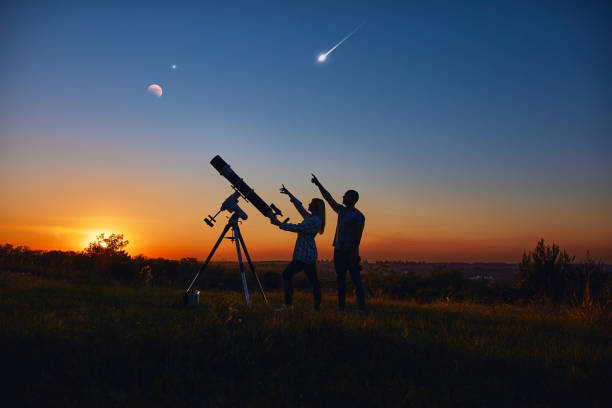Astronomy:
Astronomy is the scientific study of celestial devices, space, and the universe as an entire. It encompasses the statement and information of phenomena past Earth’s surroundings, together with stars, planets, comets, galaxies, and the cosmic microwave heritage. The field integrates ideas from physics and arithmetic to recognize the man or woman and conduct of those celestial bodies and the universe itself.
Ancient heritage
The roots of astronomy hint once more to historic civilizations. Early astronomers, including the Babylonians, Egyptians, Greeks, and Chinese, made good sized contributions to the arena. The Greeks, for instance, advanced early fashions of the cosmos, with figures like Ptolemy and Copernicus making key improvements. Ptolemy’s geocentric model, which positioned Earth in the middle of the universe, became extensively used every day until the Renaissance. The heliocentric version proposed by way of Copernicus, which placed the solar at the center, ultimately modified the geocentric version and laid the muse for present-day astronomy.
Key concepts in Astronomy
Celestial Mechanics
Celestial mechanics is to have a look at the motions of celestial objects. The prison suggestions of planetary movement, first of all formulated thru Johannes Kepler, describe how planets orbit the solar in elliptical paths. Isaac Newton later accelerated this with his law of gravitation, explaining how devices are attracted to every one-of-a-kind based totally on their hundreds and distances. These ideas help astronomers expect the positions and moves of celestial bodies.
Stellar Evolution
Stellar evolution refers back to the existence cycle of stars. Stars are born from clouds of fuel and dust in an area, known as nebulae. As gravity causes those clouds to fall apart, nuclear fusion ignites inside the middle, producing moderate and warmth. Over time, stars undergo various ranges depending on their mass. Low-mass stars, like our solar system, finally amplify into pink giants and shed their outer layers, leaving inside the back of a white dwarf. massive
stars may additionally surrender their lives in supernova explosions, which can cause the formation of neutron stars or black holes.
Cosmology is to have a look at the universe’s huge-scale form and its origins. The Big Bang precept is the main reason for the universe’s inception, suggesting that the universe began out from a really hot and dense state about 13.8 billion years in the past and has been expanding ever since. Observations of remote galaxies and the cosmic microwave heritage radiation provide proof assisting this idea. Cosmology additionally explores the future of the universe, which includes capacity conditions that incorporate endured growth or eventual contraction.
Exoplanets and Habitability
The look for exoplanets, or planets orbiting stars outside our solar device, is a burgeoning situation in interior astronomy. strategies together with the transit method and radial pace method are used to come across and study distant worlds. Scientists are specifically interested in finding Earth-like exoplanets inside the habitable sector in their stars, in which conditions might be appropriate for liquid water and doubtless existence.
Observational strategies
Astronomy relies heavily on statements, and several techniques have been advanced to check celestial objects:
1. The ones telescopes
Accumulate and make bigger seen light. floor-primarily based optical telescopes are placed in observatories around the world, while place telescopes, along with the Hubble area telescope, avoid atmospheric distortion through observing from an area.
2. Radio Telescopes:
These telescopes come across radio waves emitted with the aid of celestial gadgets. They’ve discovered phenomena together with pulsars and quasars and have been instrumental in mapping the universe’s form.
3. Vicinity Telescopes and Satellites
To observe electromagnetic radiation that Earth’s surroundings block, space-based complete observatories are vital. The James Webb location telescope, as an instance, observes in infrared wavelengths, offering insights into the formation of stars and galaxies.
4.Gravitational Waves
These are ripples in spacetime due to massive accelerating gadgets, which include merging black holes. Detectors like LIGO (Laser Interferometer Gravitational-Wave Observatory) degree those waves, presenting the latest way to take a look at cosmic occasions.
Astronomy faces numerous challenges and thrilling future guidelines:
1. Dark reliance and darkish power
Observations endorse that about 27% of the universe’s mass-power content material is dark dependent and 68% is dark energy. Those mysterious components affect the universe’s structure and increase, however their real nature stays unfamous.
2. Extraterrestrial existence
The search for extraterrestrial intelligence (SETI) and the take a look at of extremophiles in the world help scientists recognize the capacity for existence in a few different vicinity in the universe. Discoveries of extremophiles—organisms that thrive in immoderate conditions—increase the possibilities for wherein existence may additionally exist.
3. Interstellar tour
Ideas just like the step forward Starshot initiative aim to develop an era for sending small probes to exceptional structures. This would offer useful information about remote exoplanets and the capacity for habitability.
4. Astrobiology
This interdisciplinary discipline combines astronomy, biology, and chemistry to discover the situations critical for life and to examine the ability for existence in intense environments on exclusive planets and moons.
Conclusions
What is astronomy? Astronomy is a dynamic and ever-evolving subject that seeks to understand the universe and our location within it. From ancient observations to trendy area missions, it has expanded our expertise of the cosmos and keeps encouraging interest and marvel. As technology advances and new discoveries are made, astronomy will really maintain to shed moderate on the mysteries of the universe and our very own life.
Also Read: https://usamagazineworld.com/

